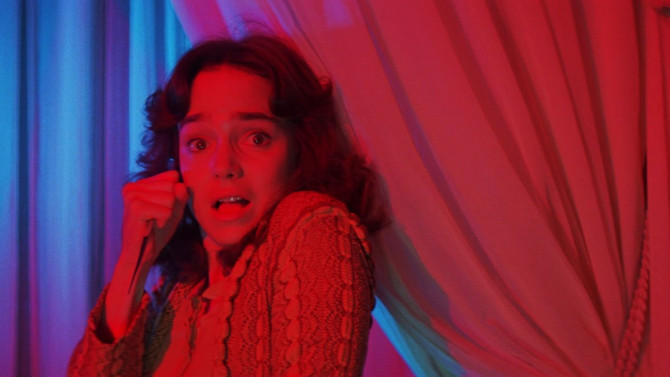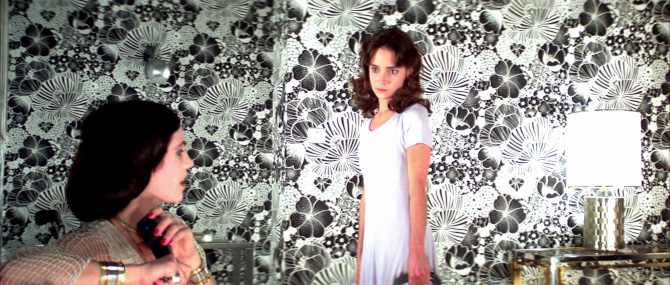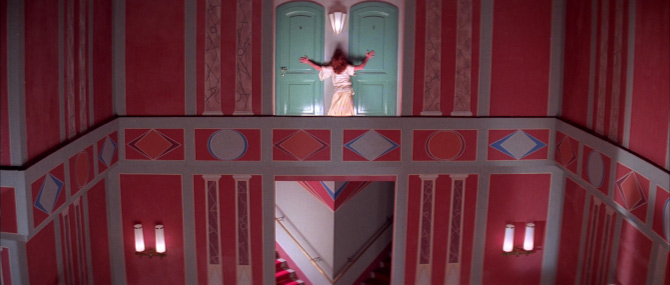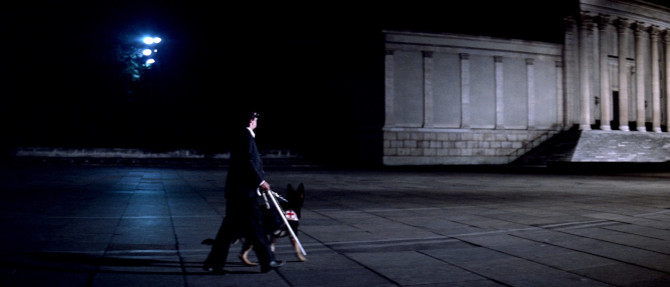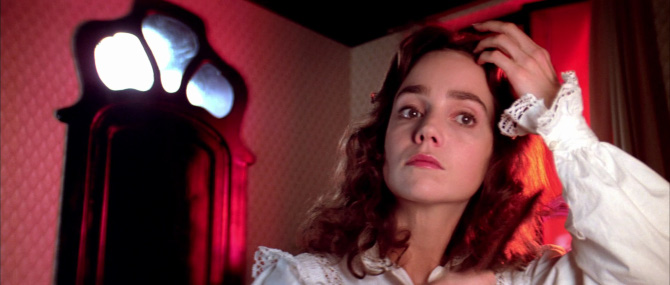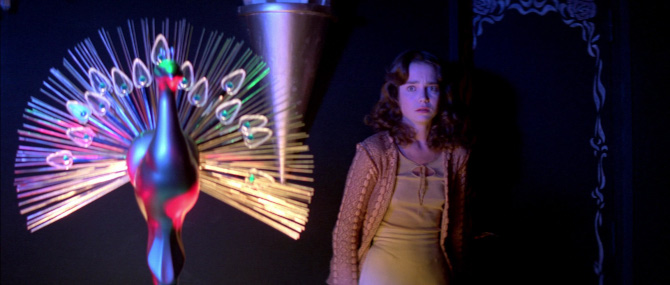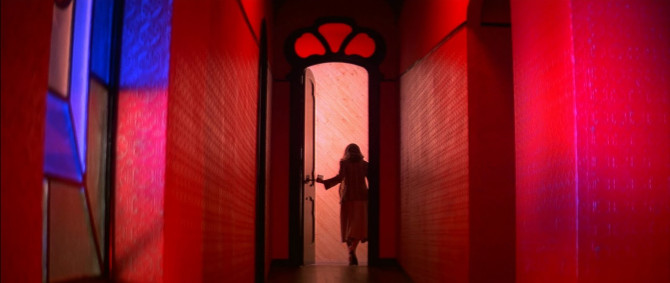Alfred Hitchcock: “When we tell a story in cinema we should resort to dialogue only when it’s impossible to do otherwise. I always try to tell a story in the cinematic way, through a succession of shots and bits of film in between.”
It is quite clear that Dario Argento took this quote from the Master of Suspense, Alfred Hitchcock, to heart when co-writing and directing his 1977 horror film Suspiria. An atmospheric mood piece, for much of its runtime, it plays as close to a silent film as you can get.
Following ballerina Suzy Bannion (Jessica Harper – she turned down a part in Annie Hall to star in this) as she arrives on a rainy night in Germany, she has recently been accepted into the prestigious Tanz Akademie dance school. . . though at first is not allowed entry, instead witnessing a woman running from the building – babbling something about ‘irises’ – likely the flower, not the eyes.
Returning the next morning, she soon learns that said woman was murdered that very night – no cause for concern. Meeting Miss Tanner (Alida Valli), the head instructor, and Madame Blanc (Joan Bennett – in her last feature film), the deputy mistress, the latter is able to quickly rectify a sleeping accommodations mixup – that’s a bit weird when she’s already registered. Starting her training, it does not go particularly well, as she feels as if she’s been drained of all her energy – perhaps it’s only jet lag? Put on a strict diet that includes red wine, it seems to do the trick. . . enlivening her energy and spirit. As she settles in, she meets and befriends her next room neighbour, Sara (Stefania Casini).
As the students prepare for dinner that evening, it begins raining maggots from the ceiling – when does that not happen. . . after all, it’s just some rotting food that was stored up in the attic. It’s as common as a dog biting a boy. . . but that could never happen. Wait, something might be going on at the academy. . . their piano player is blind – that might be suspicious. Never mind, they kicked him out, all is well.
Now, of course I jest more than a little, but in some ways, the story doesn’t matter in this film. It is a primordial tale, one that speaks to our senses and our earliest fears. It hovers in a haunting realm that holds the viewer transfixed, whether they are truly following the story or not. Its primal colours, eerie pacing, and gory set ups (in which the camera lingers for extended periods of time) all play their part in this atmospheric mood piece. Even the Art Nouveau doors, with their patterned windows above, play a part – harkening us back to a blood draining scene about a door soon to be opened in a similarly experimental silent horror film, Vampyr (1932). You can also look to films like Valerie and Her Week of Wonders (1970), or some early Roman Polanski pictures like Repulsion (1965), that live in this surreal, inexplicable landscape.
One of the most visually striking films you’ll see, Argento and his team, including production designer Giuseppe Bassan and cinematographer Luciano Tovoli, build a nightmarish fairytale landscape, partially inspired by the Disney classic Snow White and the Seven Dwarfs. One of the last films to print using the famed three-strip Technicolor process machine, it is used to bring out those vivid, primal colours seen in many films from the 1930s-50s – making it look like those early Disney films.
With mesmeric if confounding buildings that seemingly have lasted the test of time (even the pool is creepy). . . and with corridors that lead to nowhere good, an eerie forest that envelops the dance school perimeter, and those kaleidoscopic saturated colours (red, blue, green and yellow feature predominately), it is a treat for the senses. Patterns adorn nearly every surface, with multi-coloured stained glass windows shining in the hallways, geometric shapes featured on different floors and walls, and even animal patterns (like fish morphing into birds), the film even features a colourful peacock – a clear reference to his groundbreaking 1970 feature, The Bird with the Crystal Plumage.
An influential piece from the annals of horror film history, Suspiria is a gothic treat like never before seen. Backed by progressive rock band Goblin, the larger than life score (which was completed before the film – and was played on set during shooting) perfectly matches the vibrantly intense visuals onscreen. It is also worth noting an important, but short uncredited cameo from the great Udo Kier – popping up later on in the film. So, experience Suspiria first hand, even if something wicked this way comes.

